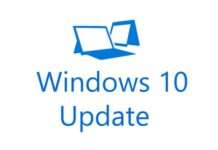If you are a content developer, you would undoubtedly be on the lookout for fresh video editing tips. After all, capturing footage for your next project is only one part of the equation; even the most stunning 4K sequences might fall flat in the hands of an untrained, under-equipped video editor. This apart, there are heaps of ways of getting similar video impacts using indistinguishable programming in this mixed time of innovation.
Any story can be told in a million different ways, and your hero’s journey begins here. Continue reading for some basic — but crucial — video editing advice that everyone should know.
- Set reasonable expectations
Consider the gear you’ll need and the results you want to attain before you start shooting. Shooting in 4K, for example, will produce stunning visuals. However, the resolution will be extremely demanding on your editing hardware, making the process tedious if you don’t have the suitable equipment.
A 1080p video with low resolution, on the other hand, can harm your message and your course’s image. As a result, evaluate the strength of your hardware and software, as well as the end product’s specific requirements.
- Select the appropriate tool
Picking the right programming for yourself as well as your occupation is the first phase in further developing your video editing process. Most video editing programming incorporates all that you want to make fundamental video changes. In light of its straightforwardness of purpose, advanced connection, and usefulness, you might lean towards one over the others.
Don’t just go out and get the most up-to-date, most-advanced video editor available. In reality, the most important thing here is to figure out what works best for you and your video editing method.
- Prioritize the story over the footage
It’s easy to get carried away by your favourite shots in the edit room when putting your video together, even if they don’t offer anything to the story. If stunning footage doesn’t offer anything to the tale, be prepared to chop.
If you’re making a video where the story is driven by characters and their relationship, for example, wide shots may have to be sacrificed in favour of close-ups that reveal character growth.
- Wide shots should be used sparingly
To give the audience a sense of where the scene is taking place, it’s common to switch between multiple camera perspectives at the start of a scene. Medium and close-up shots, on the other hand, have the strongest impact on the audience once the situation has been contextualised and dialogue has begun.
When you consider that, it’s usually always more captivating to watch a speaker’s facial emotions and movements up close rather than from a distance, the explanation behind this approach becomes clear.
- Mix in some music and sound effects.
If understanding shortcuts is the most efficient approach to speed up your editing, adding music and sound effects to your production is the most efficient way to add depth and layers.
When it comes to music, be careful to select something that complements your pictures. Because it matters, make sure you cut to the beat of the song. If done well, a well-timed cut to the rhythm can be iconic, or it can be utterly forgotten.
- Sets of three B-Roll Shots should be used
If a situation calls for cutaway inserts, three in a row feels natural. If each B-roll clip is 1.5 to 2 seconds long, anything less than three clips seems insufficient, while anything more than three seems excessive.
When a character walks into a room and looks about, B-roll shots are frequently employed. Three point-of-view inserts could be utilised in this situation to give the audience a strong sense of the environment the character has just passed through. This method also feels natural to the audience since it reflects how we interact with the real world as we travel through it.
- Media should be imported
One of the cornerstones to successful editing is media management. Keeping your media organised and accessible is essential for efficient editing. Make a note of each video element and how you want to use it during the import process.
If available, work from a shot log kept by professional productions during the shoot. During production, keep track of the takes/shots that have been designated as good and usable. Bring in what you need and leave the rest. Sort your material into bins — organise your files logically by kind, scene, or whichever system works best for you and your project.
- Don’t use too many effects
It’s easy to get carried away when there are so many options for adding intriguing video effects or transitions to your film. However, too much of something can be harmful rather than beneficial.
Furthermore, it may cause viewers to become distracted, and employing too many of them may make your film appear tacky or overbearing. As a result, you should only apply effects if they will add a relevant touch to your film.
Conclusion
Final Thoughts
You don’t have to be a video editing whiz to make professional-looking videos for your company.
In fact, you don’t even need high-end, professional-quality equipment to complete the task. You can even shoot high-quality videos with just your smartphone, to be honest. How? Well, with the appropriate editing, anything is possible. All you need to do now is implement the video editing tips to astonish others with your dazzling works of art.
Obviously, these video editing procedures won’t let you know how to make adjustments to your recordings; yet, they will assist you with slicing your video editing time down the middle and give greater videos eventually.























